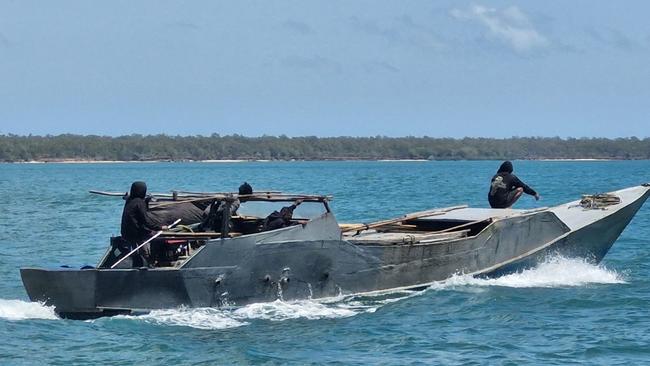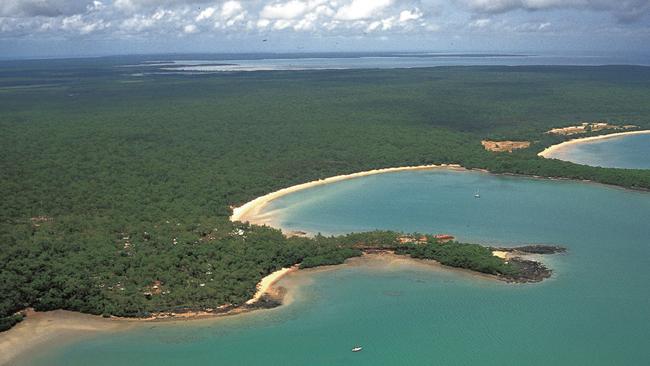Foreign vessels land on northwest Arnhem coast, Northern Land Council calls for greater security
The sighting of multiple foreign vessels off a northwest Arnhem island has triggered calls for greater security, with the Northern Land Council claiming there has been a “trending increase” in foreign illegals exploiting the area. See the pictures.

News
Don't miss out on the headlines from News. Followed categories will be added to My News.
The sighting of multiple foreign vessels off a northwest Arnhem island has triggered calls for greater security, with the Northern Land Council claiming there has been an increase in foreign illegals exploiting the area.
The claim comes after Garngi Rangers discovered four vessels concealed within the mangrove creeks of Croker Island on October 11, while working on fire management projects.
Photos captured by drone revealed several vessels had been tucked into the tree line in attempts to remain hidden.

The sighting followed reports from Traditional Owners on Cobourg Peninsula, who claimed to have seen several boats, and up to 30 foreigners walking along the coastline.
The NLC said a “lack of enforcement” had led to a rise in illegal activity, particularly in northwest Arnhem.
“The NLC and rangers have had a long history of co-operation and partnership with federal agencies – for around 12 years the number of foreign fishing vessels was low, and there was close to 100 per cent apprehension rate,’ an NLC spokesperson said.
“The number of boats has been steadily increasing since 2020/2021 in northern Australia.”

In a statement, the NLC called for greater border protection amid fears of disease threats.
“There is a need to step up effort to protect Australian coastline, which in the NT is 85 per cent Aboriginal-owned land,” the statement read.
“The biosecurity risks to Australia are significant. With Indonesian outbreaks of lumpy skin and foot and mouth disease, incidences like this pose an incredible threat to local industries.”
The statement also cited bird flu as a major fear for locals, with magpie geese and wild duck populations a vital food source for communities.
“If these diseases were to enter Australia it would greatly impact livelihoods and cost the Australian economy billions of dollars.”

However, the loss of wildlife is not only the risk troubling the NLC.
“Additionally, the risks to human health from increased foreign fishing vessels is concerning, with monkeypox, tuberculosis and the potential for rabies real threats to our communities.”
Australian Border Force and the Australian Fisheries Management Authority were contacted for comment.





